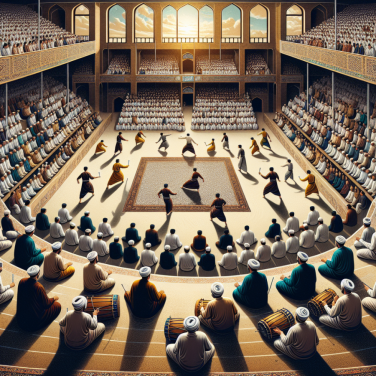The Way of Peace: Aikido as a Path to Conflict Resolution
Aikido, the Japanese martial art known for its focus on harmony and non-resistance, offers profound insights into the art of conflict resolution. This dynamic practice doesn't only teach how to defend oneself physically but goes a step further to address how conflicts can be resolved peacefully. At the heart of Aikido lies the principle of "aiki", which can be interpreted as 'joining energy', emphasizing the importance of blending with an opponent's energy to neutralize aggression without inflicting harm.
The Way of Peace in Aikido begins with the understanding that true power is not in defeating the other but in achieving a resolution where both parties can walk away without loss. This philosophy is rooted in the belief that conflict is an opportunity for growth and learning, not merely an obstacle to be overcome. The physical techniques of Aikido embody this approach, as practitioners use joint locks, throws, and pins which are designed to subdue an aggressor without causing unnecessary injury.
One of the central figures in Aikido, Morihei Ueshiba, known as O'Sensei, taught that the goal of Aikido is not to perfect a way of fighting but to perfect a way of living. He envisioned Aikido as a means to reconcile the world and help people align with the spirit of loving protection for all beings. This ethos encourages Aikidoka—practitioners of Aikido—to foster peace in their daily lives, beginning with themselves.
In the context of conflict resolution, Aikido teaches several key concepts:
1. Awareness and Presence: Aikido training enhances one's ability to be present and maintain awareness of one's surroundings, allowing for early detection of potential conflict and the chance to defuse it before it escalates.
2. Centering and Balance: The concept of maintaining one’s center, or 'hara', is crucial in Aikido. A centered individual can remain calm and focused, approaching conflicts with a clear mind, facilitating thoughtful and non-reactive solutions.
3. Harmony and Adaptability: Rather than resisting force with force, Aikido encourages blending with an attacker's movements and redirecting their energy. This principle can be metaphorically applied to conflict resolution by seeking ways to understand an opponent's perspective and finding common ground or a mutually beneficial outcome.
4. Control and Restraint: An Aikidoka learns to apply control with the minimum force necessary.
Read also:
Mastering the Wire Loop Challenge: Tips and Tricks
Unifying Body and Spirit: The Essence of Aikido Movement
Aikido, a Japanese form of martial arts, is not just about physical techniques or self-defense tactics; it is a journey that intertwines the physical with the spiritual, aiming for the harmony of body and spirit. At its very core, Aikido transcends mere movement or choreographed combat; it is a philosophical art that seeks to align the practitioner's movements with their inner sense of peace and balance.
The essence of Aikido movement is rooted in the concept of harmonizing with an opponent instead of confronting them directly. This principle is evident in the way Aikido students learn to redirect an attacker's energy using fluid, circular motions rather than relying on brute strength. By doing so, the Aikido practitioner moves in a way that respects the energy of the opponent, transforming potential conflict into an opportunity for connection and understanding.
In the practice of Aikido, every technique and movement is a reflection of the respect for life and the desire for peace that underlies the martial art. This is why Aikido is often described as the "Way of Harmony." Practitioners strive to achieve a state where mind, body, and spirit operate as a unified whole. This unification allows them to respond to aggressions with a calm and centered demeanor, embodying the Aikido philosophy that true victory is not in defeating an opponent, but in avoiding conflict altogether.
Physical techniques in Aikido, such as throws and joint locks, are designed not only to neutralize threats but also to care for the aggressor. There is a clear intention to perform movements in a way that they do no unnecessary harm, adhering to the Aikido tenet of minimizing conflict and promoting peaceful outcomes.
The dynamic interaction between Uke (the receiver of the technique) and Nage (the executor of the technique) in Aikido also highlights the concept of mutual respect and interdependence. This partnership is a dance of energy and motion, where both individuals contribute to the flow and outcome of the technique. It becomes a physical dialogue that transcends words, fostering a deeper understanding between the practitioners.
Moreover, Aikido's harmonic movements are steeped in the philosophies of Shinto and Zen, emphasizing the importance of natural flow and intuitive response. The smooth, circular motions characteristic of Aikido embody the fluidity of nature and the cycles of the universe.




